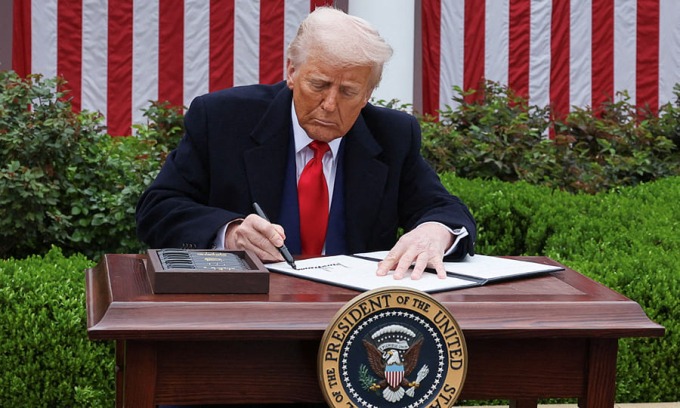News Disney
Modeling Shows Full Impact of Trump’s Tariffs, US Faces Biggest Hit
Donald Trump’s “Liberation Day” Tariffs: A Global Economic Impact Assessment
New details have emerged regarding Donald Trump’s “Liberation Day” tariffs and their potential consequences for global trade, including the United States.
The US administration asserts that these import tariffs will reduce the US trade deficit and address perceived unfair trade practices. While Canada and Mexico are currently exempt from these reciprocal tariffs, their goods are subject to a separate 25% tariff.
Despite claims that the “Liberation Day” tariffs are only half the full reciprocal rate, the underlying calculations are debatable, particularly concerning the estimation of non-tariff measures.

Economic Consequences of Retaliation
Many nations, including Canada, the EU, and China, have indicated they will respond with equivalent tariffs on US imports. Using a global economic model to simulate this tit-for-tat scenario, the estimated GDP impacts are as follows:
United States: A decrease of US$438.4 billion (1.45%), translating to a $3,487 annual decrease per household. This is the largest decrease among all countries. Mexico: Experiences the largest proportional GDP decrease at 2.24%, with households losing $1,192 annually. Canada: Sees a 1.65% GDP decrease, equating to a $2,467 annual loss per household. Vietnam: GDP decreases by 0.99%.Switzerland: GDP decreases by 0.32%. New Zealand & Brazil: Experience GDP increases of 0.29% and 0.28%, respectively, benefiting from the trade war. New Zealand households see a $397 annual gain. Rest of the World (excluding US): Aggregate GDP decreases by $62 billion.Global GDP: Decreases by $500 billion (0.43%), reinforcing the detrimental impact of trade wars on the global economy.

Economic Consequences Without Retaliation
A separate simulation modeling a scenario where other nations do not retaliate against the US tariffs reveals the following:
United States: GDP decreases by $149 billion (0.49%) due to increased production costs and consumer prices.
Canada, Mexico, Vietnam, Thailand, Taiwan, Switzerland, South Korea, and China: Experience the largest proportional GDP decreases as they face high US tariffs and export a significant portion of their goods to the US.United Kingdom: Experiences the largest GDP increase in this scenario.
Rest of the World (excluding US): Aggregate GDP decreases by $155 billion, more than double the decrease seen with retaliation. This suggests that retaliation, while damaging to the US, mitigates losses for other nations.
In conclusion, the “Liberation Day” tariffs and the ensuing trade tensions pose significant risks to the global economy. While the US aims to reduce its trade deficit, these measures are projected to negatively impact its own GDP substantially, especially if other nations retaliate. The analysis indicates that a trade war initiated by these tariffs would lead to a smaller global economy, with the US potentially facing the most significant economic damage.


